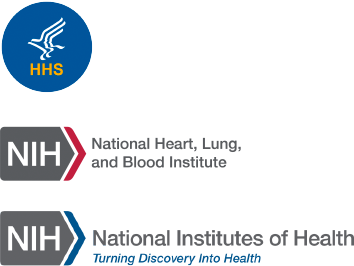ACTIV4c has concluded enrollment, and analysis of the collected data has begunACTIV4c ha finalizado la inscripción y ha comenzado el análisis de los datos recopilados
Thank you to the 1,217 volunteers who participated in the ACTIV-4c study. This is a remarkable accomplishment in a major pandemic. We are tremendously grateful for your time, commitment and courage to help during this national crisis. Your participation may help improve COVID-19 treatments for others in the future.Gracias a los 1,217 voluntarios que participaron en el estudio ACTIV-4c. Este es un logro extraordinario en una pandemia grave. Estamos enormemente agradecidos por su tiempo, compromiso y valor para ayudar durante esta crisis nacional. Su participación puede ayudar a mejorar los tratamientos para el COVID-19 para otras personas en el futuro.
What do we hope to learn? ¿Qué esperamos aprender?
At this point, we do not know if taking blood thinners after being hospitalized with COVID-19 will have an impact on preventing blood clots. After we collect and analyze the final data, we will learn the results. Preliminary findings may be available in late Fall 2022 and if so, will be published here when they become available. We are very eager to see what we will learn from this necessary clinical trial. En este punto, no sabemos si tomar anticoagulantes después de ser hospitalizado con el COVID-19 afectará la prevención de los coágulos de sangre. Después de recopilar y analizar los datos finales, conoceremos los resultados. Es posible que los hallazgos preliminares estén disponibles a finales del otoño de 2022 y, de ser así, se publicarán aquí cuando estén disponibles. Estamos muy entusiasmados de ver qué aprenderemos de este ensayo clínico necesario.
Read about what was learned from volunteers in other studies like this one. Lea (en inglés) sobre lo que se aprendió de los voluntarios en otros estudios como este.
- Full-dose blood thinners decreased need for life support and improved outcome in hospitalized COVID-19 patients (ACTIV-4a)Los anticoagulantes en dosis completa disminuyeron la necesidad de soporte vital y mejoraron el resultado en pacientes hospitalizados con el COVID-19 (ACTIV-4a)
- There was no significant difference in preventing blood clots in unhospitalized COVID-19 patients receiving blood thinners versus those prescribed placebos (ACTIV-4b)No hubo una diferencia significativa en la prevención de coágulos de sangre en pacientes con COVID-19 no hospitalizados que recibieron anticoagulantes en comparación con los placebos recetados (ACTIV-4b)
How was your ACTIV-4c experience? ¿Cómo fue su experiencia con ACTIV-4c?
Complete a brief 2-minute survey to share what worked well and what could change to improve future studies. Complete una breve encuesta de 2 minutos (en inglés) para compartir lo que funcionó bien y lo que podría cambiar para mejorar futuros estudios.
Stay in touch Siga en contacto
ACTIV-4c volunteers may be eligible to participate in studies that will assess the longer-term effects of COVID-19, also known as long-COVID. A member of the RECOVER registry team may follow up with you to see if you are interested. Some volunteers may also be asked to participate in additional clinical trials to learn how to best treat long-COVID. Los voluntarios de ACTIV-4c pueden ser elegibles para participar en estudios que evaluarán los efectos a más largo plazo del COVID-19, también conocido como COVID prolongado. Es posible que un miembro del equipo del registro RECOVER le haga un seguimiento para ver si está interesado. A algunos voluntarios también se les podrá pedir que participen en ensayos clínicos adicionales para obtener información sobre la mejor manera de tratar el COVID prolongado.
Check back soon for more information about the RECOVER registry. Vuelva a consultar pronto para obtener más información sobre el registro RECOVER.

What is the ACTIV-4c Post-Hospital study?¿Qué es el estudio ACTIV-4c posterior a la hospitalización?
Hospitalized patients with COVID-19 are at higher risk of forming blood clots during their hospital stay and even after they're discharged. The goal of this study is to understand if a low dose blood thinner medication can prevent blood clots from forming in people who were recently hospitalized for COVID-19. Participants will take the study medication for 30 days and be contacted by the study team to assess how they're doing.Los pacientes hospitalizados con COVID-19 tienen un mayor riesgo de formación de coágulos de sangre durante la hospitalización e incluso después de recibir el alta. El objetivo de este estudio es comprender si un medicamento anticoagulante en una dosis baja puede prevenir la formación de coágulos de sangre en personas recientemente hospitalizadas a causa de la COVID-19. Los participantes deberán usar el medicamento del estudio durante 30 días y el equipo del estudio se comunicará con ellos para evaluar cómo están.

What is the link between blood clots and COVID-19?¿Cuál es la relación entre los coágulos de sangre y la COVID-19?
Blood clots form inside blood vessels and can travel through the body blocking the flow of blood to organs, like the brain, lungs, or heart. The chance of blood clots forming in patients who are diagnosed with COVID-19 appears to be higher than for patients who do not have COVID-19. In fact, most patients with COVID-19 who are admitted to the hospital are treated with blood thinners to prevent clots while they are in the hospital.Los coágulos de sangre se forman dentro de los vasos sanguíneos, y pueden desplazarse por el cuerpo y bloquear el flujo de sangre a los órganos, como el cerebro, los pulmones o el corazón. Las probabilidades de formación de coágulos de sangre en los pacientes con diagnóstico de COVID-19 parecen ser mayores que en los pacientes que no tienen COVID-19. De hecho, la mayoría de los pacientes con COVID-19 que ingresan en el hospital reciben tratamiento con anticoagulantes para prevenir los coágulos mientras están hospitalizados.
Doctors use anticoagulation medicines, known as "blood thinners," to lower the risk of blood clots forming in blood vessels (veins and arteries). However, we do not know if taking a low dose blood thinner will protect COVID-19 patients who are at risk of clotting after they leave the hospital. This is why the purpose of this study is to compare people who take a low dose blood thinner after leaving the hospital with people who do not.Los médicos usan medicamentos anticoagulantes, que se conocen como “diluyentes de la sangre”, para reducir el riesgo de que se formen coágulos de sangre en los vasos sanguíneos (venas y arterias). Sin embargo, no sabemos si el uso de un anticoagulante en una dosis baja protegerá a los pacientes con COVID-19 que corren un riesgo de formación de coágulos después de abandonar el hospital. Por ello, el objetivo de este estudio es comparar las personas que reciben un anticoagulante en una dosis baja después de abandonar el hospital con las personas que no lo hacen.
Who is a good fit for the ACTIV-4c study?¿Quién es adecuado para el estudio ACTIV-4c?
Someone who is:Alguien que:
- age 18 or olderTenga 18 años de edad o más.
- COVID-19 positive and being discharged from the hospitalHaya obtenido un resultado positivo para COVID-19 y reciba el alta del hospital.
- Willing and able to take study pills, provided at no cost, every morning and evening for 30 daysEsté dispuesto a tomar las píldoras del estudio, que se entregarán sin ningún costo, y pueda hacerlo cada mañana y cada noche durante 30 días.
- Willing to periodically answer questions via phone or online survey so study staff can assure safety and track their progressEsté dispuesto a responder preguntas por teléfono o una encuesta en línea de manera periódica, de modo que el personal del estudio pueda garantizar la seguridad y hacer un seguimiento de su evolución.
- Willing to answer questions about their quality of life during the 90-day periodEsté dispuesto a responder preguntas sobre su calidad de vida durante el período de 90 días.
What happens during the study?¿Qué sucede durante el estudio?

At DischargeEN EL MOMENTO DEL ALTA
Participants receive a study kit that includes study pills and instructions that cover everything discussed with the study team.Los participantes reciben un kit del estudio, que incluye las píldoras del estudio e instrucciones que abarcan todos los aspectos analizados con el equipo del estudio.

Follow-Up ContactCOMUNICACIÓN PARA EL SEGUIMIENTO
Participants choose to have the study team contact them via online survey, text, or phone call.Los participantes eligen que el equipo del estudio se comunique con ellos mediante una encuesta en línea, mensajes de texto o llamadas telefónicas.
Continue
Study PillsCONTINÚE CON LAS PÍLDORAS DEL ESTUDIO
Continue
Study PillsCONTINÚE CON LAS PÍLDORAS DEL ESTUDIO
Continue
Study PillsCONTINÚE CON LAS PÍLDORAS DEL ESTUDIO

Day 1DÍA 1
Start Study Pills the morning after getting home.COMIENCE CON LAS PÍLDORAS DEL ESTUDIOla mañana después de llegar a su casa.

Day 2DÍA 2
Follow-Up* The study team will follow-up with you at home to assess safety and study progressSEGUIMIENTO*El equipo del estudio le hará un seguimiento en su casa para evaluar la seguridad y la evolución del estudio.
*all follow-ups are available
in English and Spanish*todos los seguimientos se encuentran disponibles en inglés y español.

Day 10DÍA 10
Follow-UpSEGUIMIENTO The study team will follow-up with you at home to assess safety and study progressEl equipo del estudio le hará un seguimiento en su casa para evaluar la seguridad y la evolución del estudio.

Day 20DÍA 20
Follow-UpSEGUIMIENTO The study team will follow-up with you at home to assess safety and study progressEl equipo del estudio le hará un seguimiento en su casa para evaluar la seguridad y la evolución del estudio.

Day 30DÍA 30
Follow-UpSEGUIMIENTO The study team will follow-up with you at home to assess safety and study progressEl equipo del estudio le hará un seguimiento en su casa para evaluar la seguridad y la evolución del estudio.

Take Your Last PillTOME LA ÚLTIMA PÍLDORA
on the evening of day 30.la noche del día 30.


Day 30DÍA 30
Take Your Last PillTOME LA ÚLTIMA PÍLDORA on the evening of day 30.la noche del día 30.
Follow-UpSEGUIMIENTO The study team will follow-up with you at home to assess safety and study progressEl equipo del estudio le hará un seguimiento en su casa para evaluar la seguridad y la evolución del estudio.

Day 45DÍA 45
Follow-UpSEGUIMIENTO The study team will follow-up with you at home to assess safety and study progressEl equipo del estudio le hará un seguimiento en su casa para evaluar la seguridad y la evolución del estudio.

Day 90DÍA 90
Last Follow-UpÚLTIMO SEGUIMIENTO The study team will follow-up with you at home to assess safety and study progressEl equipo del estudio le hará un seguimiento en su casa para evaluar la seguridad y la evolución del estudio.

Study
Complete!FINALIZACIÓN DEL ESTUDIO


Day 90DÍA 90
Last Follow-UpÚLTIMO SEGUIMIENTO The study team will follow-up with you at home to assess safety and study progressEl equipo del estudio le hará un seguimiento en su casa para evaluar la seguridad y la evolución del estudio.
Study Complete!FINALIZACIÓN DEL ESTUDIO
Which medication is a part of this study?¿Qué medicamento forma parte de este estudio?
Most patients with COVID-19 who are admitted to the hospital are treated with blood thinners to prevent clots from forming while they are in the hospital. However, after discharge, we do not know if taking a blood thinner will help prevent blood clots for people who are COVID-19 positive.La mayoría de los pacientes con COVID-19 que ingresan en el hospital reciben tratamiento con anticoagulantes para prevenir la formación de coágulos mientras están hospitalizados. Sin embargo, después del alta, no sabemos si el uso de un anticoagulante ayudará a prevenir los coágulos de sangre en personas positivas para la COVID-19.
Which is why this study will compare people who take a low dose blood thinner after leaving the hospital with people who do not. The blood thinner used in this study is call apixaban or Eliquis. This drug is already approved by the U.S. Food and Drug Administration (FDA) to prevent the formation of blood clots.Por ello, en este estudio se compararán las personas que reciben un anticoagulante en una dosis baja después de abandonar el hospital con las personas que no lo hacen. El anticoagulante que se usa en este estudio se llama apixaban o Eliquis. Este fármaco ya está aprobado por la Administración de Alimentos y Medicamentos (Food and Drug Administration, FDA) de los EE. UU. para prevenir la formación de coágulos de sangre.

Group 1Grupo 1 - usual care with a low dose of the blood thinner apixaban added. This is a pill that will be taken by mouth twice a day- la atención habitual, con el agregado de una dosis baja del anticoagulante apixaban. Es una píldora que deberá tomarse por boca dos veces por día.
Group 2Grupo 2 - usual care with a pill that looks like the apixaban, but which contains no blood thinner (called a "placebo"). This is also a pill that will be taken by mouth twice a day- la atención habitual con una píldora que tiene el mismo aspecto que apixaban, pero que no contiene ningún anticoagulante (llamada “placebo”). Esta también es una píldora que deberá tomarse por boca dos veces por día.



Meet the study leadership teamConozca al equipo directivo del estudio

Dr. Tom Ortel,Duke University
Study ChairResponsable del estudio

Dr. Alison Morris,University of Pittsburgh
Study Co-ChairResponsable adjunta del estudio

Dr. Tracy Wang,Duke University
Principal InvestigatorInvestigadora principal

Dr. Jerry Krishnan,University of Illinois Chicago
Research Communication Center DirectorDirector del Centro de Comunicaciones de Investigaciones
Dr. Tom Ortel,Duke University
Dr. Alison Morris,University of Pittsburgh
Dr. Tracy Wang,Duke University
Dr. Jerry Krishnan,University of Illinois Chicago
Study ChairResponsable del estudio
Study Co-ChairResponsable adjunta del estudio
Principal InvestigatorInvestigadora principal
Research Communication Center DirectorDirector del Centro de Comunicaciones de Investigaciones








